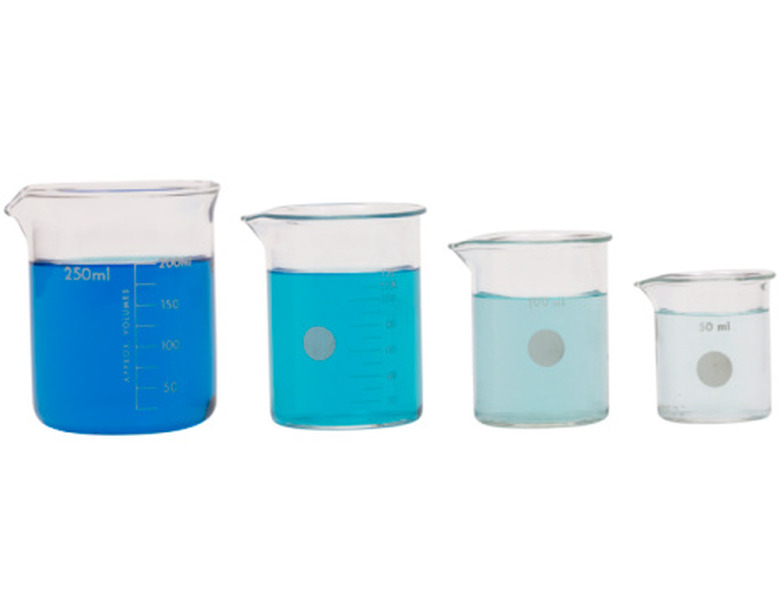How To Calculate Concentration From Extinction Coefficient
In order to find the concentration ("c") of a chemical in solution using measurements of light absorption, you must know three things. One is the extinction coefficient of the chemical, also known as the molar absorptivity or molar absorption coefficient and abbreviated "E." The other two are the path length of the container the solution is in ("l") and the light absorbance ("A") of the solution. Once you have these values, you can use the well-known Beer-Lambert Law; A = (E)(c)(l).
Step 1
Enter the absorbance reading obtained for the sample solution into the calculator. Most instruments used for light absorption analysis will give a readout directly in absorbance (which has no units associated with it). If necessary, calculate the absorbance of a sample from its light transmittance. The transmittance ("T") of a sample is the ratio of the light intensity that exits a sample solution over the intensity of the light that enters. Absorbance is the base 10 logarithm of 1/T.
Step 2
Divide the absorbance value you just entered by the path length of the cell that is holding the sample. The cell is usually a rectangular quartz vessel called a cuvette that contains the sample solution as the light passes through it. The path length is the inner width of this vessel, essentially the distance of the solution through which the light passes. A common path length is one centimeter.
Step 3
Divide the result of the previous calculation by the extinction coefficient. This coefficient will be in units of liters/(mole)(centimeter) and will be specific to the particular chemical testing and the particular wavelength of light you are using. You will normally have determined this coefficient through earlier testing of the chemical or obtained it from a reference source. The result of this calculation is the concentration of the chemical in the solution tested, in units of moles/liter.
Things Needed
- Path length of sample solution holding cell
- Extinction coefficient
- Light absorbance reading
- Calculator
TL;DR (Too Long; Didn't Read)
The extinction coefficient of a chemical can also change due to variations in the solvent used to dissolve it, as well as temperature and pH, so all these factors should be kept constant.
Cite This Article
MLA
Judge, Michael. "How To Calculate Concentration From Extinction Coefficient" sciencing.com, https://www.sciencing.com/calculate-concentration-extinction-coefficient-8239523/. 24 April 2017.
APA
Judge, Michael. (2017, April 24). How To Calculate Concentration From Extinction Coefficient. sciencing.com. Retrieved from https://www.sciencing.com/calculate-concentration-extinction-coefficient-8239523/
Chicago
Judge, Michael. How To Calculate Concentration From Extinction Coefficient last modified March 24, 2022. https://www.sciencing.com/calculate-concentration-extinction-coefficient-8239523/
